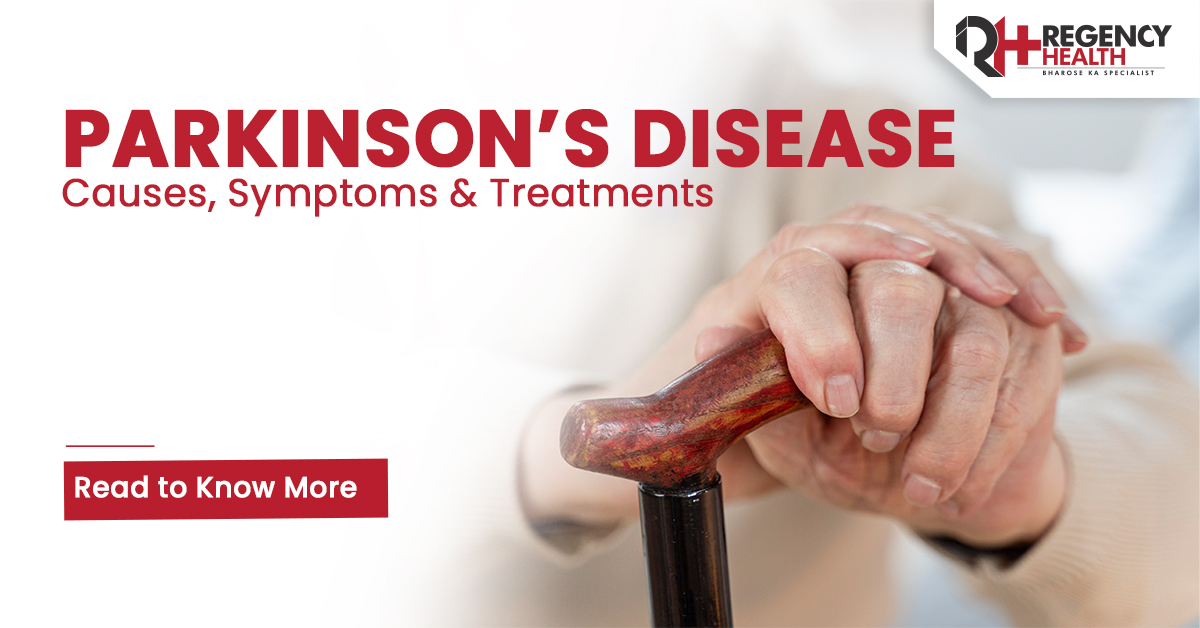
What is Parkinson’s disease?
Parkinson’s disease is a degenerative brain illness associated with aging. The disease results in the deterioration of brain function over a period of time. Some of the main Parkisnson’s disease symptoms are delayed movements, tremors, and balance issues, among others. A majority of these cases are caused by unknown factors, but some are hereditary. Although there is no known cure for the illness, there are numerous treatment options that focus on minimizing the symptoms.
In Parkinson’s disease, a portion of your brain deteriorates, leading to increasingly severe symptoms over time. Although the symptoms of this disorder are most commonly associated with how they impair muscular control, balance, and movement, they can also have a wide range of additional implications on your mental prowess, intellectual capabilities and motor senses.
Parkinson’s disease causes damage to your brain’s basal ganglia resulting in deterioration in specific areas of the brain. Your brain normally uses chemical messengers called neurotransmitters to regulate how your brain cells (neurons) communicate with one another. When a person suffers from Parkinson’s disease, the brain faces a dopamine ( a type of neurotransmitter) deficiency causing problems in the brain’s normal functions.
What are Parkinson’s disease symptoms?
Muscle control irregularities are one of the most common symptoms of Parkinson’s disease. Medical experts state that Parkinson’s disease can develop in a variety of ways and not just as problems with motor function.
- Slow movement (bradykinesia)– Weak muscles are one of the foremost symptoms of Parkinson’s. This condition causes weakness in muscles and it only involves muscle control issues and there is no loss of strength.
- Muscular tremor – A vast majority of Parkinson’s patients face muscle tremors even when they’re in a static position.
- Stiffness or rigidity– Parkinson’s disease commonly involves cogwheel and lead-pipe rigidity. Lead pipe rigidity means unchanging stiffness in a moving body part. Cogwheel, on the other hand, refers to a combination of tremors and lead pipe rigidity.
- Shaky gait or unsteady posture– Parkinson’s disease causes slowness and rigidity, which results in a slumped or stooped posture. This typically appears as the illness worsens. A person suffering from Parkinson’s usually takes short strides and arm movement is pretty limited. Even basic movements like turning back involve more effort and steps.
Parkinson’s disease causes
The sole known causes of Parkinson’s disease are hereditary, even though there are many other risk factors, including pesticide exposure. Experts categorise Parkinson’s disease as “idiopathic” (Greek for “a disease of its own”) when it isn’t genetic. This means the precise cause is unknown. Many disorders that resemble Parkinson’s disease are actually parkinsonism, which is a term for conditions that resemble Parkinson’s disease and have a specific cause, such as some psychiatric medication.
How to diagnose Parkinson’s disease?
Parkinson’s disease is typically diagnosed by a clinical process, which entails a doctor asking you questions, observing your symptoms, and reviewing your medical history. Although various diagnostic and lab tests can be done, these are usually necessary to rule out other illnesses or specific causes. However, most lab tests aren’t necessary unless your Parkinson’s disease treatment isn’t working, which may be a symptom of another illness.
When doctors suspect Parkinson’s disease or need to rule out other conditions, they would recommend some imaging and diagnostic tests. These include:
-
- Blood Test
- Genetic Test
- CT Scan
- MRI
- Pet Scan
Treatment of Parkinson’s disease
Parkinson’s disease cannot be cured as of now, however, there are several options available to treat its symptoms. The treatments can also differ from person to person depending on each individual’s unique symptoms and how well various options work. The main treatment for Parkinson’s is medication. Surgery to implant a device that will administer a gentle electrical current to a portion of your brain (deep brain stimulation) is a secondary treatment option for Parkinson’s disease. Additionally, there are some experimental possibilities, such as stem cell-based therapies, but their accessibility varies a lot and many of them are not a feasible option for those who have Parkinson’s disease.

 Call-an-Ambulance
Call-an-Ambulance



